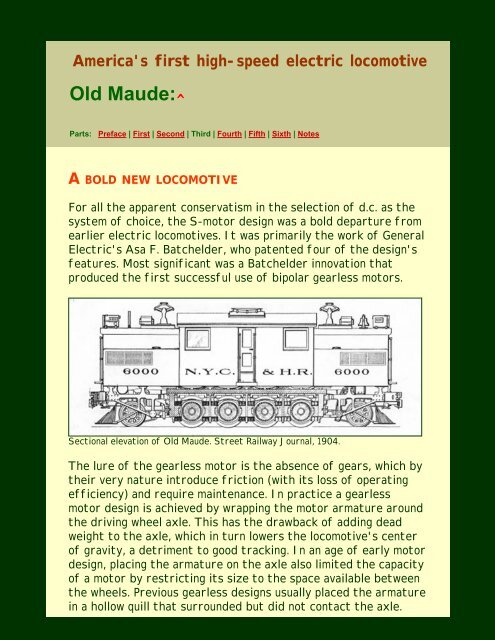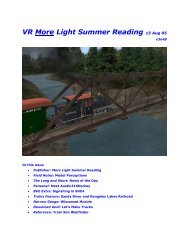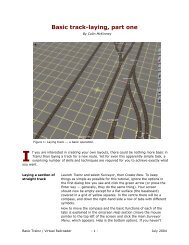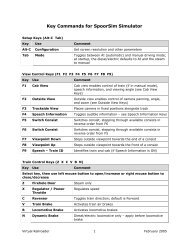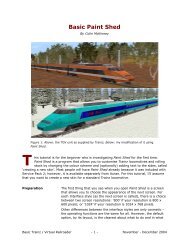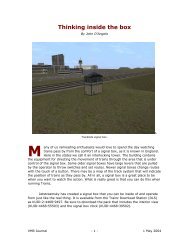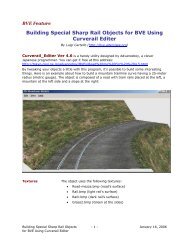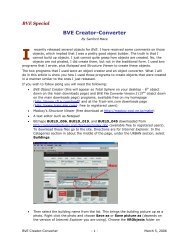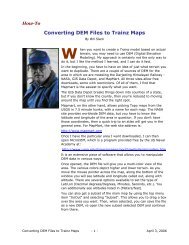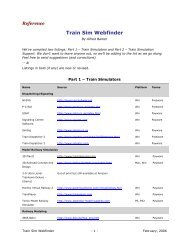Old Maude, Preface - Virtual Railroader
Old Maude, Preface - Virtual Railroader
Old Maude, Preface - Virtual Railroader
You also want an ePaper? Increase the reach of your titles
YUMPU automatically turns print PDFs into web optimized ePapers that Google loves.
America's first high-speed electric locomotive<br />
<strong>Old</strong> <strong>Maude</strong>:^<br />
Parts: <strong>Preface</strong> | First | Second | Third | Fourth | Fifth | Sixth | Notes<br />
A BOLD NEW LOCOMOTIVE<br />
For all the apparent conservatism in the selection of d.c. as the<br />
system of choice, the S-motor design was a bold departure from<br />
earlier electric locomotives. It was primarily the work of General<br />
Electric's Asa F. Batchelder, who patented four of the design's<br />
features. Most significant was a Batchelder innovation that<br />
produced the first successful use of bipolar gearless motors.<br />
Sectional elevation of <strong>Old</strong> <strong>Maude</strong>. Street Railway Journal, 1904.<br />
The lure of the gearless motor is the absence of gears, which by<br />
their very nature introduce friction (with its loss of operating<br />
efficiency) and require maintenance. In practice a gearless<br />
motor design is achieved by wrapping the motor armature around<br />
the driving wheel axle. This has the drawback of adding dead<br />
weight to the axle, which in turn lowers the locomotive's center<br />
of gravity, a detriment to good tracking. In an age of early motor<br />
design, placing the armature on the axle also limited the capacity<br />
of a motor by restricting its size to the space available between<br />
the wheels. Previous gearless designs usually placed the armature<br />
in a hollow quill that surrounded but did not contact the axle.


